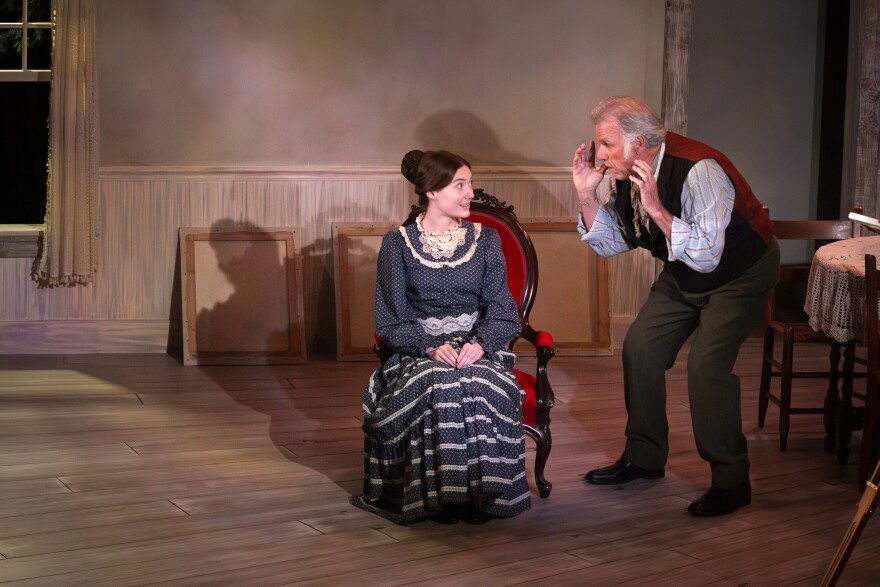Until recently, little was known about 19th century portrait artist (also referred to as a “limner”) Ammi Phillips (1788-1865).
The painter, born in Colebrook, ���ǻ���, was self-taught, going from town to town painting portraits of locals, mainly in ���ǻ���, Massachusetts and upstate New York. Phillips did not sign these works, but because of his distinct style and sheer volume of portraits, the world would eventually learn his name.
Now, the is producing a dramatic take on one chapter of Phillips’ life.
In 2020, WSHU reporter on how 100 years ago Phillips was known by art historians simply as the “Kent Limner.” Dunavin told the story of a 1924 street fair in Kent, ���ǻ���. Organizers encouraged residents to find and display old family portraits from the attic. As people walked by they couldn’t help but notice they all seemed to be from the same artist.
Finally in 1958, a couple purchased a portrait at an antique shop in Fairfield, and on the back they found the name Ammi Phillips. That opened the floodgates, as historians and scholars began attributing more and more paintings to him, and piecing together his life’s story.
Thrown Stone Theater in Ridgefield heard Dunavin’s story, and thought Phillips would be a good subject for a theater piece. They commissioned Pittsburgh-based playwright Tammy Ryan to write the work. The result: “Seven Cousins for a Horse.”

Set in 1848, “Seven Cousins for a Horse” imagines the itinerant painter at a low point in his professional and personal life.
“He’s lost his 5-year-old daughter,” said Jonathan Winn, who directed the play. “His marriage is in trouble, and his career is threatened by the advent of the daguerreotype.”
Phillips is invited to stay with the family of his favorite cousin, Nisus Kinney in Colebrook. There he agrees to paint the entire family, all seven of them, in exchange for a sturdy horse. Several of the Kinney family portraits are on display at the Litchfield Historical Society.
“The experience of looking at these portraits is extremely intimate, and you feel like you form a relationship with the sitters,” Winn said. “Particularly Sarah's portrait. She died a month after she was painted. When I saw her portrait I said: ‘You know, somebody’s going to know your name, somebody’s going to know that you lived here.’ And we are making good on that promise.”
Winn said the play touches on the news of the day. In the late 1840s, the United States was going through a time of social and political upheaval.
“Slavery in ���ǻ��� ended in 1848,” Winn said. “The other big thing that happened in 1848 was the Seneca Falls convention, which were the first calls for universal suffrage. It’s just remarkable to me how it feels so radical. We found little moments of revolution in the play.”
“Seven Cousins for a Horse” at the Ridgefield Conservatory of Dance.





